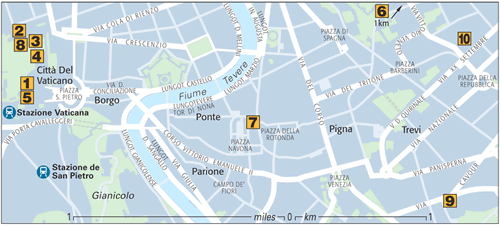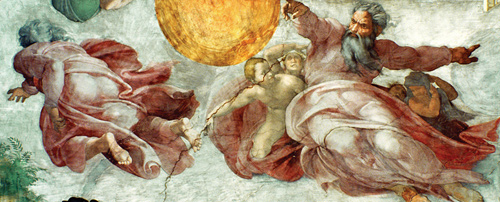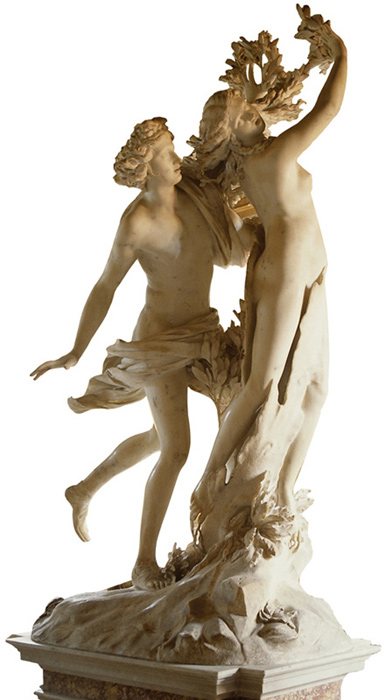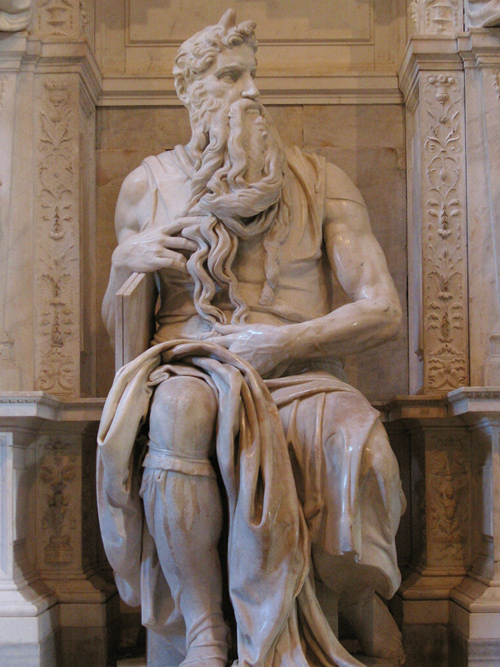|

Caravaggio’s Deposition Caravaggio strove to outdo Michelangelo’s Pietà
by making his Mary old and tired. Rather than a slender slip of a
Christ, Caravaggio’s muscular Jesus is so heavy (emphasized by a
diagonal composition) that Nicodemus struggles with his legs and John’s
grasp opens Christ’s wound. Raphael’s Transfiguration Raphael’s
towering masterpiece and his final work was found, almost finished, in
his studio when he died. It is the pinnacle of his talent as a
synthesist, mixing Perugino’s clarity, Michelangelo’s colour palette and
twisting figures, and Leonardo’s composition . Michelangelo’s Pietà The
Renaissance is known for naturalism, but Michelangelo warped this for
artistic effect. Here, Mary is too young, her dead son, achingly thin
and small, laid across her voluminous lap. Hearing the work being
attributed to better known sculptors, the artist crept into the chapel
of St Peter’s one night and carved his name in the band across the
Virgin’s chest .

Michelangelo’s Pietà
Raphael’s School of Athens When
Raphael first cast his contemporary artists as Classical thinkers in
this imaginary setting, one was missing. After he saw the Sistine
ceiling Michelangelo was painting down the hall, Raphael added the
troubled genius, sulking on the steps, as Heraclitus . Michelangelo’s Sistine Chapel Although
he considered himself a sculptor first, Michelangelo managed to turn
this almost flat ceiling into a soaring vault peopled with Old Testament
prophets and ignudi (nude men). He did it virtually alone, firing all of his assistants save one to help him grind pigments .

Ceiling, Sistine Chapel
Bernini’s Apollo and Daphne Rarely
has marble captured flowing, almost liquid movement so gracefully.
Bernini freezes time, wind-blown hair and cloak, in the instant the
fleeing nymph is wrapped in bark and leaves, transformed into a laurel
by her sympathetic river god father .

Caravaggio’s Calling of St Matthew Caravaggio uses strong chiaroscuro
techniques here. As a naturalistic shaft of light spills from Christ to
his chosen chronicler, St Matthew, Caravaggio captures the precise
moment of Matthew’s conversion from tax collector to Evangelist . Leonardo da Vinci’s St Jerome Barely
sketched out, yet compelling for its anatomical precision and
compositional experimentation. Jerome forms a spiral that starts in the
mountains, runs across the cave entrance and lion’s curve, up the
saint’s outstretched right arm, then wraps along his left arm and hand
into the centre . Michelangelo’s Moses This
wall monument is a pale shadow of the elaborate tomb for Julius II that
Michelangelo first envisaged and for which he carved this figure. Some
claim there is a self-portrait hidden in the flowing beard. Moses is
currently undergoing a long restoration but remains visible .

Bernini’s Ecstasy of St Teresa The
saint here is being pierced by a smirking angel’s lance, and is Bernini
at his theatrical best. He sets this religious ecstasy on a stage
flanked by opera boxes from which members of the commissioning Cornaro
family look on .

|